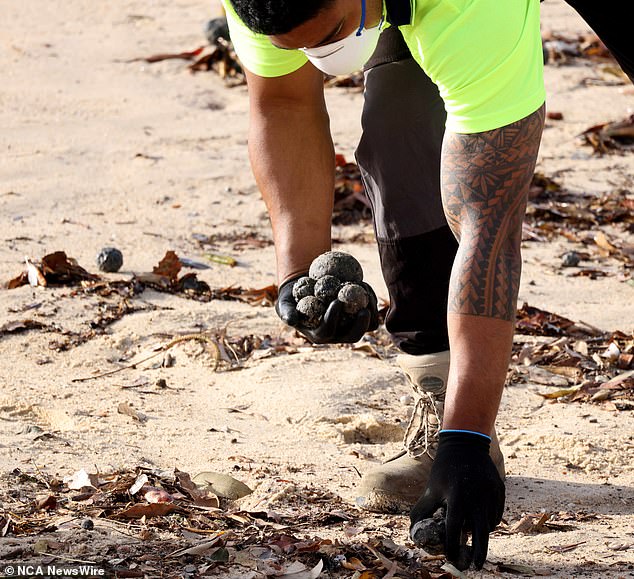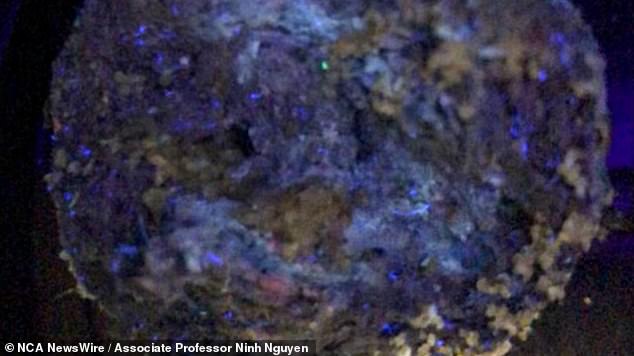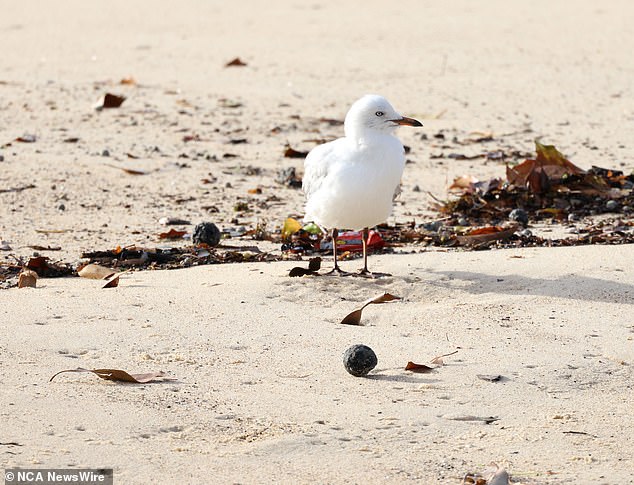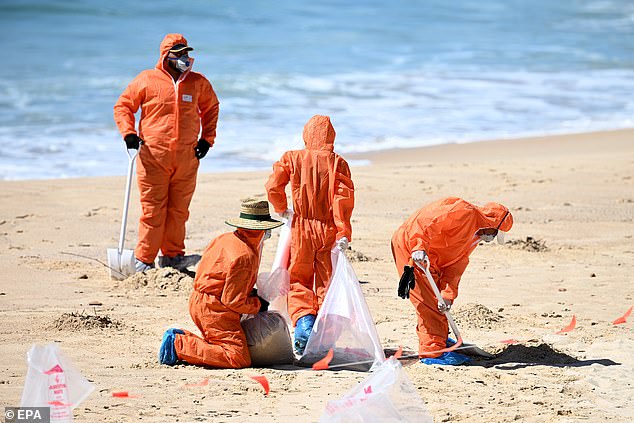Preliminary tests have revealed the composition of “tar balls” that have appeared on some of Sydney’s most famous beaches.
Scientists at the University of New South Wales believe eroded oil is the main component of the balls that have mysteriously been washing up on Sydney’s eastern beaches since Tuesday.
Tests found that the balls contain bituminous materials mixed with biological matter, including fatty acids.
Beaches between Bondi and Botany Bay have been closed to the public on and off all week as black tar balls continue to appear.
The “unusual” spheres were first discovered along Coogee Beach on Tuesday, prompting Randwick Council to immediately close the beach while testing was carried out.
Gordons Bay, Clovelly Beach and Maroubra Beach have also been closed to the public since then after the balls also appeared along their coastline.
Bondi, Tamarama and Brontë beaches were also closed “out of an abundance of caution”, Waverly Council said.
The beaches will remain closed until further notice.
Beaches remain closed as clean-up efforts continue between Bondi and Botany Bay (pictured)

Thousands of balls have washed up on Sydney beaches since their discovery on Tuesday (pictured, council workers are seen cleaning up Coogee Beach on Wednesday).
UNSW chemist Alex Donald said the findings confirmed the tar balls originated from eroded oil.
“It is still unclear whether they were due to a natural leak or a crude oil spill,” he said.
“Further chemical analysis is needed to identify the source.”
The researchers also studied the balls under ultraviolet radiation.
The specks on the balls are fluorescent, indicating organic compounds.
The tar balls “probably came from petroleum-based sources.”
“Whether caused by human activity or natural processes, solving the mystery of these sticky invaders requires continued scientific research.”
“The source could be related to oil spills, petrochemical processes or environmental contamination with hydrocarbons,” Professor Donald said.
The fluorescence indicates that the seaweed is adhering.

UNSW researchers have studied tar balls under ultraviolet light (pictured)
Similar balls appear off the coast of California due to oil seeping from the seabed. Golden Beach in Queensland and Ninety Mile Beach in Gippsland have experienced similar stains, following oil spills or ship discharges.
Professor Donald said finding out whether the tar balls came from a spill or from the seabed was important in shaping the right environmental response.
An industrial spill could lead to legal action and requires immediate cleanup.
“Toxic compounds from tar balls can leach into the water, posing long-term threats to marine biodiversity,” he said.
“The appearance of tar balls on beaches like Coogee not only damages Australia’s pristine coastal reputation but also threatens the health of ecosystems that support industries such as fishing and tourism.”
The six UNSW scientists will continue to analyze the balls and Randwick Council will provide them with samples.

The balls are not hard like stones and their shape indicates that they have been in the sea for at least weeks.
Cleanup efforts to safely remove and dispose of debris from popular beaches began Wednesday and are expected to continue.
Randwick Mayor Dylan Parker said the council would continue to remove the material from all beaches over the weekend.
‘Community safety is our first priority. That is why the City Council has taken the precaution of closing these beaches while we carry out the safe collection and disposal of this material,” he stated.
“We still do not know what has happened to cause the debris to reach our beaches, but we will continue to work with the relevant authorities to ensure the safety of the public and clean our beaches.”

